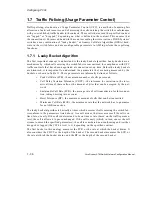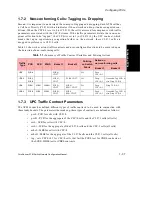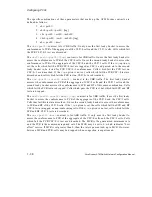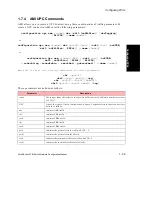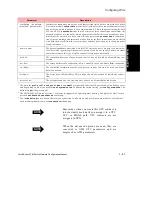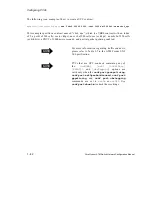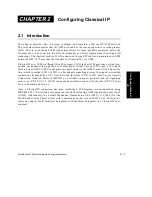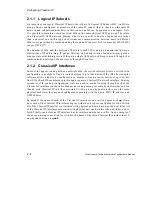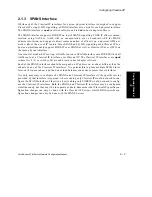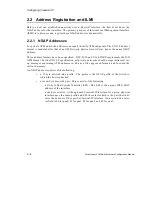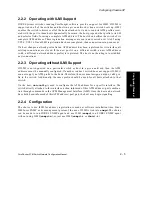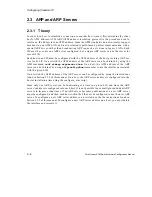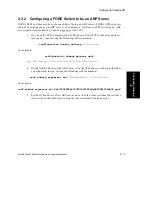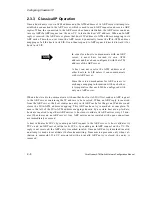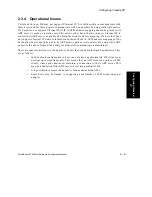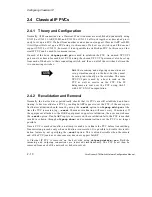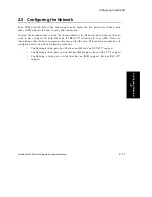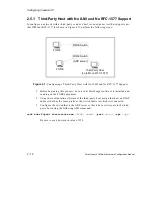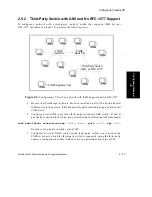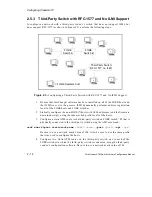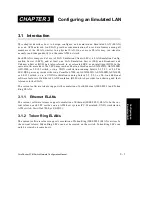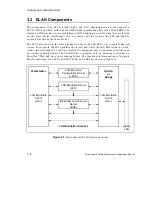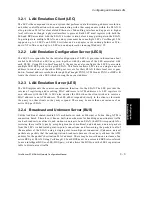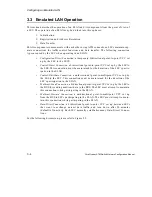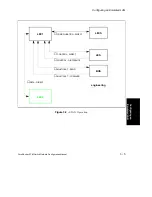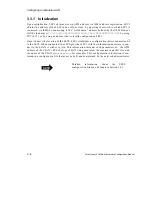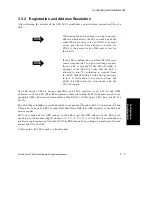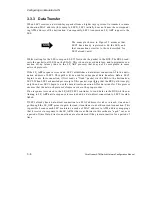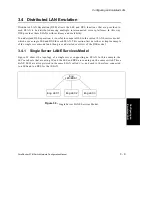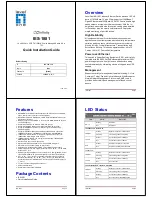
2 - 8
ForeRunner
ATM Switch Network Configuration Manual
Configuring Classical IP
2.3.3 Classical IP Operation
Once a host knows its own ATM address and the ATM address of its ARP server it attempts to
establish a connection to the ARP server, which is used to send ARP requests and receive ARP
replies. When the connection to the ARP server has been established, the ARP server sends an
inverse ARP (InARP) request on the new VC to learn the host’s IP address. When an InARP
reply is received, the ARP server places that host’s IP address to ATM address mapping in its
ARP cache. Therefore, over time, the ARP server dynamically learns the IP-to-ATM address
mappings of all the hosts in its LIS. It can then respond to ARP requests directed toward it for
hosts in its LIS.
NOTE
In order for a host to communicate with an ARP
server, it must have learned its own ATM
address and have been configured with the ATM
address of the ARP server.
A host can not resolve the ATM addresses of
other hosts in its LIS unless it can communicate
with its ARP server.
Since there is no mechanism for ARP servers to
exchange mapping information with each other,
it is imperative that each LIS be configured with
only one ARP server.
When a host wants to communicate with another host in its LIS, it first sends an ARP request
to the ARP server containing the IP address to be resolved. When an ARP reply is received
from the ARP server, the host creates an entry in its ARP cache for the given IP address and
stores the IP-to-ATM address mapping. This ARP cache entry is marked as complete. To
ensure that all of the IP-to-ATM address mappings known by a certain host are up-to-date,
hosts are required to age their ARP entries. A host must validate its ARP entries every 15 min-
utes (20 minutes on an ARP server). Any ARP entries not associated with open connections
are immediately removed.
A host validates its SVCs by sending an ARP request to the ARP server. A host validates its
PVCs, and an ARP server validates its SVCs, by sending an InARP request on the VC. If a
reply is not received, the ARP entry is marked invalid. Once an ARP entry is marked invalid,
an attempt is made to revalidate it before transmitting. Transmission proceeds only when val-
idation is successful. If a VC associated with an invalid ARP entry is closed, the entry is
removed.
Summary of Contents for forerunner series
Page 6: ......
Page 16: ...TOC 10 ForeRunner ATM Switch Network Configuration Manual Table of Contents ...
Page 20: ...LOF 4 ForeRunner ATM Switch Network Configuration Manual List of Figures ...
Page 22: ...LOT 2 ForeRunner ATM Switch Network Configuration Manual List of Tables ...
Page 30: ...viii ForeRunner ATM Switch Network Configuration Manual Preface ...
Page 144: ...3 58 ForeRunner ATM Switch Network Configuration Manual Configuring an Emulated LAN ...
Page 180: ...6 12 ForeRunner ATM Switch Network Configuration Manual ATM Forum PNNI ...
Page 220: ...9 6 ForeRunner ATM Switch Network Configuration Manual Configuring Timing ...
Page 300: ...D 24 ForeRunner ATM Switch Network Configuration Manual Configuring FramePlus Modules ...
Page 308: ...Acronyms 8 ForeRunner ATM Switch Network Configuration Manual Acronyms ...
Page 346: ...Glossary 38 ForeRunner ATM Switch Network Configuration Manual Glossary ...
Page 352: ...Index 6 ForeRunner ATM Switch Network Configuration Manual Index ...

